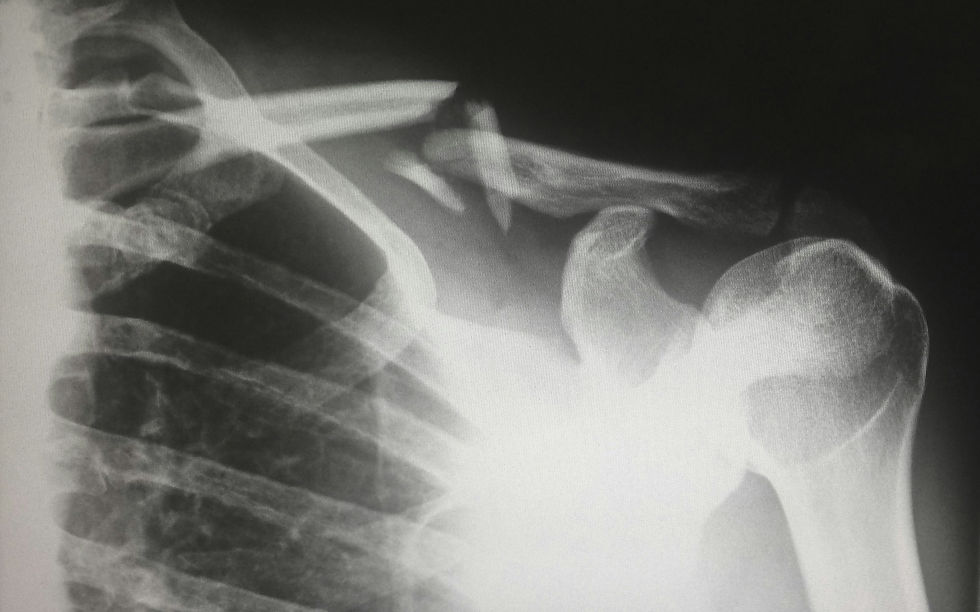Evolution & Sweat
- ANATOMY IN CLAY® System

- May 5, 2021
- 3 min read
Don’t sweat it.
Maybe you remember, on your way to a dance in Junior High, a droplet of sweat forming behind your knee and cascading down your leg. Or maybe you get a puzzled look when people go to shake your hand, only to find a clammy paw. Or maybe your sweaty armpits have forced you to enact a makeover to your wardrobe.
Regardless, you are not alone. A third of U.S. adults feel that they produce too much underarm sweat. Over 15.3 million Americans have identified as living with hyperhidrosis, or excessive sweating. That’s according to the International Hyperhidrosis Society, which seeks to improve quality of life for those that sweat excessively. The organization co-sponsors a litany of research in what has become a burgeoning medical field.
Yana Kamberov, Ph.D., is an assistant professor of genetics at Penn Medicine and lead author of a study on human sweat glands, published this April in Proceedings of the National Academy of Sciences.
Her message to the heavy sweaters? (And, let’s be clear, that’s all of us at some point—right?)
There is a reason we developed the capacity to sweat. And yes, it has to do with human evolution.
Between 800,000 and 300,000 years ago, early hominins faced a flat, hot, and unforgiving climate in the African savanna, a “markedly different habitat than the jungles occupied by other ape species.”
Our ancestors needed to figure out a way to stay cool. Shedding fur was one way. Sweating, the study reports, was another.
Modern-day Homo Sapiens possess, embedded in the skin, a density of sweat glands ten times greater than chimpanzees and macaques. Kamberov and her research team chart how sweatiness evolved in our genome, cementing itself as one of the “most extreme and distinctively human evolutionary traits,” according to the author.
Quite literally, no species sweats like us.
Kamberov’s previous work included a 2015 study in which the author found that the expression level of a certain gene, called “Engrailed 1,” determined the density of eccrine glands in mice. In other words, more “EN1” equals more sweat glands. Based on this work, Kamberov suspected that humans evolved genetic changes to increase the production of EN1 in the skin.
So, what in the human body is responsible for gene activity and expression? It’s clusters of DNA called “enhancer regions.” The enhancer region in humans that Kamberov and her team
identified in the latest study is called “hECE18” —and they are far more active in humans than in mice, chimpanzees, and macaques.

Human evolutionary traits—take language, for example —are usually a result of complex genetic interactions that involve more than one of these regulatory regions. Kamberov’s study indicates that in the case of our sweat trait, our sweatiness is likely due to repeated mutations in a single regulatory region: hECE18.
For the research team, the study is a testament to the power of evolution: the “tweaking of the biological system in a way that is actually beneficial, without breaking it.”
The identification of EN1 and hECE18 could have medical implications in the near future. When someone is severely wounded or burned, the affected area of skin loses the ability to sweat. Why? Because the wound/burn destroys sweat glands. In theory, scientists now have a “molecular inroad” via hECE18 to activate gene expressions to make sweat glands.
In the end, humans are sweaty. It’s not a bad thing.
Just think: my cooling capacity is a state-of-the-art, evolutionary wonder.
.
.
.




The Winnipeg Jets are interesting team. Ie remarked in previous recaps that you seldom know which version of the team youe getting. Winnipeg can appear in so many nique variants, it hard to pick a favorite! I prefer the ones where the Jets don turn the puck over every 5 seconds Cole Kehler Flag. Against the Montreal Canadiens, we unfortunately experienced the Turnover Supreme squad I greatly detest. The First PeriodBy all accounts, everything seemed to be lining up for Winnipeg with a strong start. The opening period held a lot of jump for the Jets, with Winnipeg top lines creating some serious offensive zone havoc. The third line did its thing and drove towards the slot while Nikol…